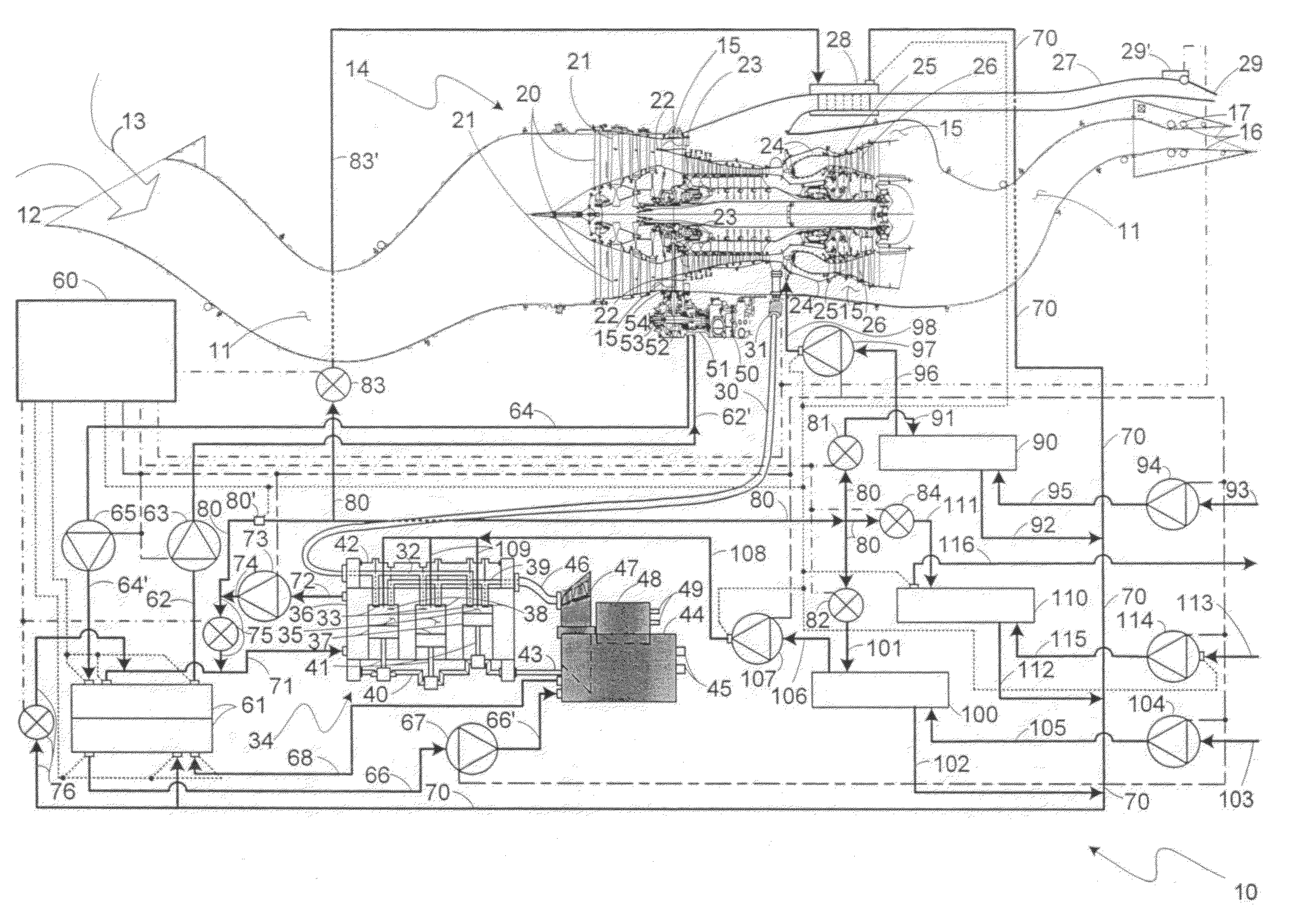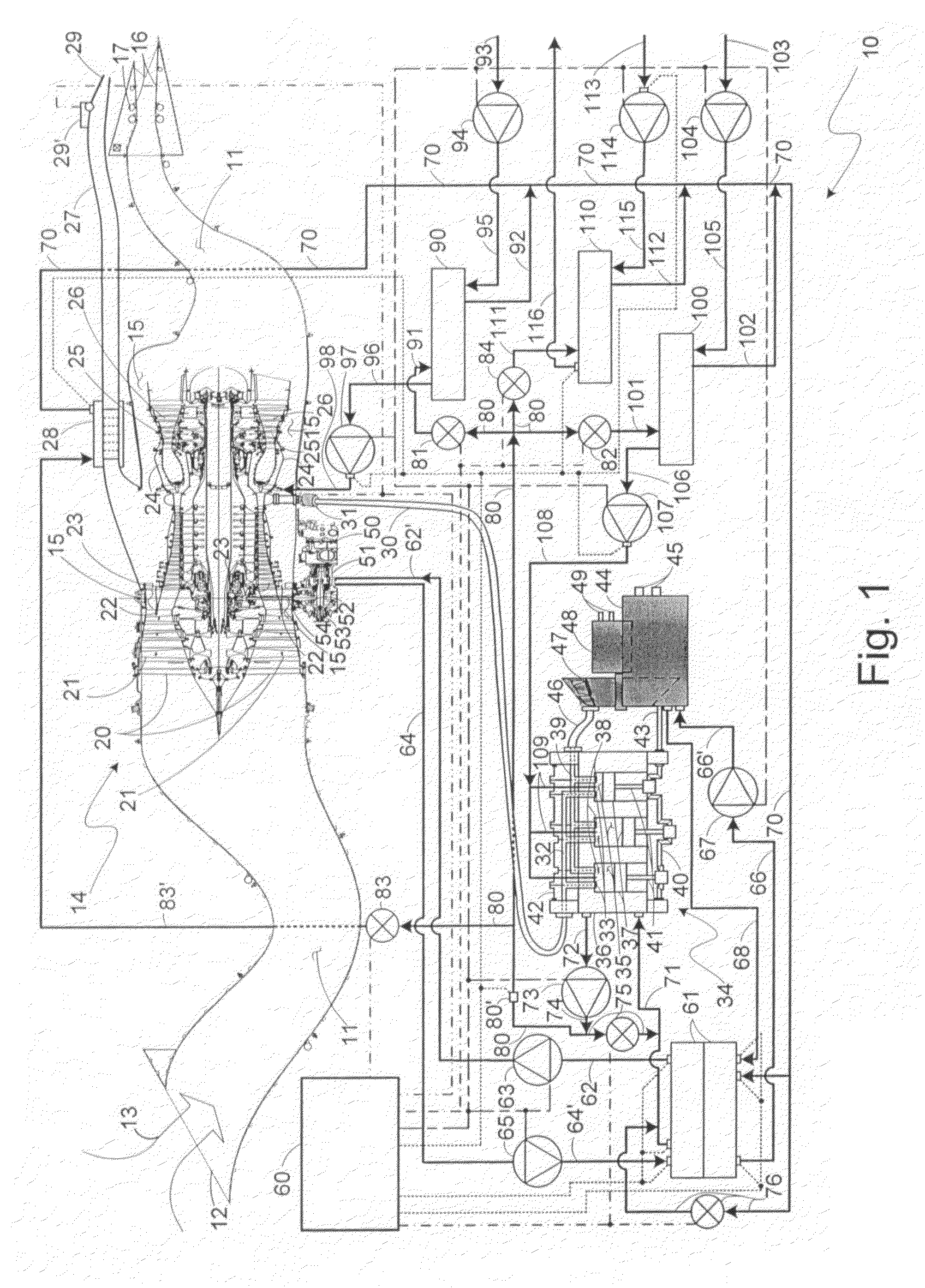Aircraft combination engines thermal management system
a technology for thermal management system and aircraft, applied in the direction of machines/engines, turbine/propulsion fuel heating, lighting and heating apparatus, etc., can solve the problems of large electrical power demand peaks repeatedly, the fuel use efficiency of aircraft during flight is relatively low, and the electrical power demand of military aircraft is often high
- Summary
- Abstract
- Description
- Claims
- Application Information
AI Technical Summary
Benefits of technology
Problems solved by technology
Method used
Image
Examples
Embodiment Construction
[0014]Keeping heat in operating internal combustion engines of all kinds that has been generated in those engines during such operation thereof increases the thermodynamic efficiency of those operations. Of course, there are limits to operating those engines with such a goal that are imposed by the maximum temperatures that various engine components can withstand before failing in some manner. These limits are avoided typically by providing suitable cooling arrangements of some sort for the engines, and sometimes their loads devices, but such cooling should not be overdone as this cooling requires using energy therefor that is typically supplied from the engines being cooled. Such energy use thereby reduces the energy from the engines that would otherwise be available for propulsion or such other tasks that have been assigned to the engine. That is, the engines and their loads should be operated at their maximum feasible operating temperatures for reasons of efficiency.
[0015]In an a...
PUM
 Login to View More
Login to View More Abstract
Description
Claims
Application Information
 Login to View More
Login to View More - R&D
- Intellectual Property
- Life Sciences
- Materials
- Tech Scout
- Unparalleled Data Quality
- Higher Quality Content
- 60% Fewer Hallucinations
Browse by: Latest US Patents, China's latest patents, Technical Efficacy Thesaurus, Application Domain, Technology Topic, Popular Technical Reports.
© 2025 PatSnap. All rights reserved.Legal|Privacy policy|Modern Slavery Act Transparency Statement|Sitemap|About US| Contact US: help@patsnap.com



